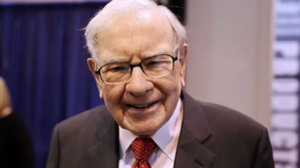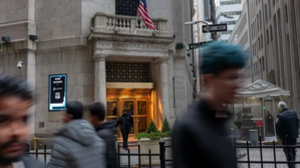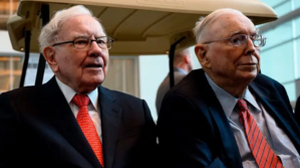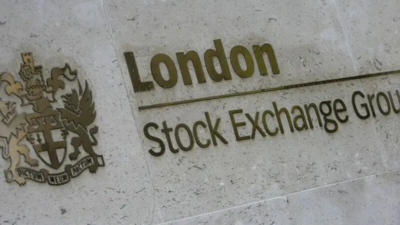Why some investors don’t mind waiting longer for rate cuts
A version of this story first appeared in CNN Business’ Before the Bell newsletter. Not a subscriber? You can sign up right here. You can listen to an audio version of the newsletter by clicking the same link.
Wall Street struggled this week to accept the cold reality that the Federal Reserve likely won’t cut interest rates any time soon. But higher-for-longer rates are far from a death knell for stocks.
Piping-hot inflation data released Tuesday proved a tough pill for traders to swallow. Stocks and bonds both sold off as investors painfully recalibrated their expectations for five to six interest rate cuts this year to align more with the Fed’s projected three cuts.
Traders now largely expect the Fed to begin cutting rates in June or July, rather than at its May policy meeting, according to the CME FedWatch Tool.
Keeping rates elevated for long enough to tamp down inflation without triggering mass unemployment has been a delicate balancing act for the Fed. Chair Jerome Powell said in January that while inflation data has been encouraging, the central bank wants to see more signs of cooling prices before moving to pare rates.
Yet if inflation continues to ebb, the current level of interest rates could be overly restrictive and drag on the economy. At the same time, if officials cut rates too soon, they could inadvertently invite more inflation.
While Wall Street was rattled Tuesday by the possibility of delayed rate cuts, some investors say volatility is par for the course and that delayed easing of monetary policy is not a cause for concern.
For example, Yardeni Research has pushed back against the idea that immediate rate cuts are necessary to avoid the Fed overshooting on slowing the economy. Rather, it is the Fed’s tightening cycles that set off financial crises that turn into credit crunches, which then give way to economic downturns, its researchers argue.
Put simply, since the Fed, the Federal Deposit Insurance Corporation and the US Treasury stepped in last year to contain a potential financial crisis — the collapses of Silicon Valley Bank and Signature Bank that set off regional banking turmoil — the Fed’s current level of tightening is not likely to trigger a recession and rock Wall Street, they say.
“Our view is that with inflation still on a moderating trend and with economic growth remaining strong, what’s the rush to lower interest rates? Why mess with success?” wrote Ed Yardeni, president of Yardeni Research, in a Tuesday briefing.
Stocks wouldn’t crater even if cuts were off the table completely in 2024, according to Bank of America, despite what Tuesday’s losses suggest. The bank’s strategists point out that roughly one-third of the S&P 500’s market cap are companies that have cash on hand. As long as the Fed doesn’t hike rates again (there’s no official indication that the central bank is currently considering such a move), stocks could still see a strong performance this year, they say.
“No cuts could stymie a full-fledged recovery in more credit-sensitive areas,” wrote BofA strategists in a note on February 9. “But we remind investors that we expected strong returns this year not because of what the Fed would do in 2024, but because of what the Fed had already accomplished from March 2022 to now.”
The central bank has made notable headway in bringing down wayward inflation since starting to raise rates aggressively nearly two years ago. Consumer prices rose 3.1% for the 12 months ended this January. While that’s above FactSet-polled economists’ expectations of a 2.9% gain, it’s still leaps and bounds below the 9.1% annual jump that inflation peaked at in June 2022.
Of course, that doesn’t mean investors won’t see more pain ahead.
Two of those more credit-sensitive areas are the embattled regional banking and commercial real estate sectors. Some investors are worried that regional lenders are on shaky ground after reporting lackluster quarterly results and that commercial real estate could be the next shoe to fall as office buildings remain vacant.
The Fed in January said that it’s pulling the plug on its Bank Term Funding Program, established after regional banking turmoil last year to help lenders meet their liquidity needs. That means regional lenders will no longer have that crutch if they run into trouble after the program’s expiration on March 11.
Economists and investors also warn that getting inflation from 3% to the Fed’s elusive 2% target will likely be the toughest leg of its price-stabilizing campaign. That’s because the stickiest inflation components, or areas like services and goods that are most resistant to changing market conditions, now have to come down.
“The path to 2% inflation … will not be a straight line. As such, the only thing we can count on is volatility along the way,” wrote Marc Dizard, chief Investment strategist at PNC Asset Management Group, in a Tuesday note.
Bitcoin euphoria is back as investors prepare for the quadrennial ‘halving’
Bitcoin rose to $50,000 a coin on Monday for the first time in two years, fueled by a rush of new-investor enthusiasm and growing anticipation over a cryptic-sounding event known as “the halving,” reports my colleague Allison Morrow.
Bitcoin, the world’s most popular cryptocurrency, dipped back into the high 40s on Tuesday, snapping seven straight days of increases, and remains far from its all-time high of around $69,000. But bitcoin has staged a remarkable comeback over the past year and a half, climbing more than 200% from its 2022 low of $16,000.
There are a few key forces driving the latest bitcoin euphoria, including an influx of money from investors in newly launched bitcoin exchange-traded funds and excitement over the halving, when the rate of bitcoin production is slashed.
“Now that $50,000 has been topped, $69,000 followed by $100,000 look achievable in 2024 as the narrative switches from the ETFs to the upcoming halving,” said Antoni Trenchev, the co-founder of crypto lender Nexo Capital. “Which is exciting because if history rhymes, the next 12-18 months is going to be a scorcher for crypto.”
Read more here.
Americans with low credit scores use ‘Buy Now, Pay Later’ more often
Americans who are already facing some money trouble are more intensive users of “Buy Now, Pay Later” offerings, with the majority of them tapping the short-term installment payment programs five or more times a year, according to new research released Wednesday by the Federal Reserve Bank of New York.
“Financially fragile” individuals — those who have a credit score under 620 or were declined for a credit application or fell delinquent on a loan in the past year — are more than three times as likely as other, more financially stable, individuals to use Buy Now, Pay Later multiple times a year, New York Fed researchers wrote Wednesday in a Liberty Street Economics blog post.
Last fall, New York Fed researchers found that people experiencing financial difficulties and those with the greatest unmet credit needs were the largest users of BNPL programs, accounting for nearly one-third of the overall user base.
The latest update released Wednesday drew on consumer survey data collected in October (before the spendy holiday season) and was focused on the intensity of BNPL usage, reports my colleague Alicia Wallace.
Read more here.
Maybe You Like
London Stock Exchange urged to do more to hold onto retail traders
The UK stock market needs to improve investor communication and engagement in order to retain its individual traders, according to a report from online trade and investor provider CMC Markets. ADVERTISEMENTUK retail investors are increasingly...
Hargreaves Lansdown rejects private equity takeover bid
The UK investment platform says the offer from a group including the Abu Dhabi Investment Authority undervalues the firm. ADVERTISEMENTHargreaves Lansdown has rebuffed a takeover proposal worth £4.67 billion (€5.48 billion) made...
Ferrovial set to offload UK regional airports amid Heathrow deal uncertainty
Ferrovial is planning to sell its stake in three UK regional airports amid difficulties in finalising its £2.4bn sale of a 25% stake in Heathrow. ADVERTISEMENTSpanish infrastructure company Ferrovial is reportedly putting up for sale...



























